Adapting to the Times: Mating Vintage Engines with Late-Model Overdrive Transmissions
 There's little question about what the hottest trend in rodding is right now: traditional styling. Old speed parts and vintage powerplants have grown from an underground counterculture to one of the most popular trends in the industry. A rebirth of rodding's beginnings and new manufacturing technology spitting out new-old parts have put higher horsepower vintage powerplants on the road. A lot of the early V-8 engines were fine designs and virtually bulletproof. Naturally, never developments sent hot rodders scrambling for the latest goodies, and many of the great old powerplants were sent out to pasture. The final evolution of this mindset would mean small block Chevy engines under everyone's hood, which is pretty much what happened. Today, there's a want to bring back the forgotten powerplants and some of the uniqueness they bring along.
There's little question about what the hottest trend in rodding is right now: traditional styling. Old speed parts and vintage powerplants have grown from an underground counterculture to one of the most popular trends in the industry. A rebirth of rodding's beginnings and new manufacturing technology spitting out new-old parts have put higher horsepower vintage powerplants on the road. A lot of the early V-8 engines were fine designs and virtually bulletproof. Naturally, never developments sent hot rodders scrambling for the latest goodies, and many of the great old powerplants were sent out to pasture. The final evolution of this mindset would mean small block Chevy engines under everyone's hood, which is pretty much what happened. Today, there's a want to bring back the forgotten powerplants and some of the uniqueness they bring along.
Unfortunately, the original transmissions backing these vintage engines aren't up to current standards. While we can update the internals of a vintage engine to produce respectable power, the old transmissions simply aren't up to supporting it. Furthermore, during the '50s era, when V-8s were flourishing, automatic transmission technology was still in its infancy. Designed for smoothness, the early torque converters were horribly inefficient, and there was no such thing as an over-driven automatic. Early automatic transmissions, like Chrysler's Fluid Drive, Chevy's Turboglide, Buick's Dynaflow, and Oldsmobile's "Slim Jim" earned the not-so-flattering nickname "slush box."
Those same inefficient transmissions were the best things going in their time, and backed up many great powerplants. It was a gas friendly era where fuel proces were at a minimum and long daily commutes weren't the norm. Then, once the first big gas crunches hit, it sent auto manufacturers scrambling to improve mileage and reduce emissions. The creation of the modern over-drive transmission was the answer.
Today, more enthusiasts are putting additional miles under their street machines while driving cross-country to attend car shows and events. The addition of the modern overdrive transmission offers many benefits, including serviceability, reliability, greatly improved fuel economy, and reduced wear and tear on your engine. Unlike vintage transmissions, parts and services for late-model units are readily available almost anywhere in the country. Also, spinning fewer rpm means you can potentially double the freeway mileage from around 7-8 mpg to 14-16 mpg or even more, depending on the application. Over time, an overdrive transmission is one of the few upgrades that could potentially pay for itself in fuel costs.
Our '62 Olds project is a perfect example of what many enthusiasts face. Here's a car weighing around 5,000 lbs, with a 394ci "Rocket" engine and "slim Jim" Roto-10 transmission. As GM's first post-ward overhead valve engine, the "Rocket" family of V-8s is legendary for their power and durability, boasting up to 330-horsepower and 440 ft. lbs. of torque . By contrast, the "Slim Jim" automatic rates quite low among transmissions, as it wasn't able to hold high torque loads and only offered two real forward gears. With gas prices raising for the immediate future, our decision to replace the weakest link was an easy one.
Unfortunately, few practical options are available for reliable automatics to back early V-8s. In our case, a unique bolt pattern and the bellhousing being cast as part of the block (much like the '49-'54 331ci Cadillac and the '51-'53 331ci Chrysler Hemi,) we chose to do what rodders do...adapt! After further research, we decided to use an adapter kit from Bendtsen's Transmission Center.
The folks at Bendtsen's have built a reputation among customer car builders for their quality and well-fitting transmission adapter kits for many makes of vintage engines. Even withing the "Rocket" family of early Olds V-8s there were many variations from year-to-year and displacement-to-displacement. Bendtsen's has done years of homework on their 303/324/371/394 kit to ensure it will match every variable. They also offer cross-platform adapters to put modern transmissions (both manual and automatic) behind a wide range of traditional American four-and-six-cylinder engines too.
Bendtsen's kit for our "Rocket" adapts the early Oldsmobile bolt pattern to a more-common late-model GM arragnement, and compensates for the bellhousing extension with a long crankshaft adapter. With our new bolt pattern, and our experience with Gearstar Performance Transmissions, we decided to use a 200-4R because it isn't computer controlled, and because its smaller case closely matches the size of the original "Slim Jim." Gearstar's custom-building policy, excellent warranty, competitive pricing, and the completeness of their ktis made our choice an easy one. When we ordered the transmission, we shared all of the important information about our project Olds with them, and they were happy to design and custom build a transmission to suit our specific needs.



Street Thunder - November/December 2007
Written By: Matt Sprouse
 All kits made from High-Quality USA Aluminum and Steel. Proudly manufactured in the U.S.A.!
All kits made from High-Quality USA Aluminum and Steel. Proudly manufactured in the U.S.A.!

Comments
Leave a comment